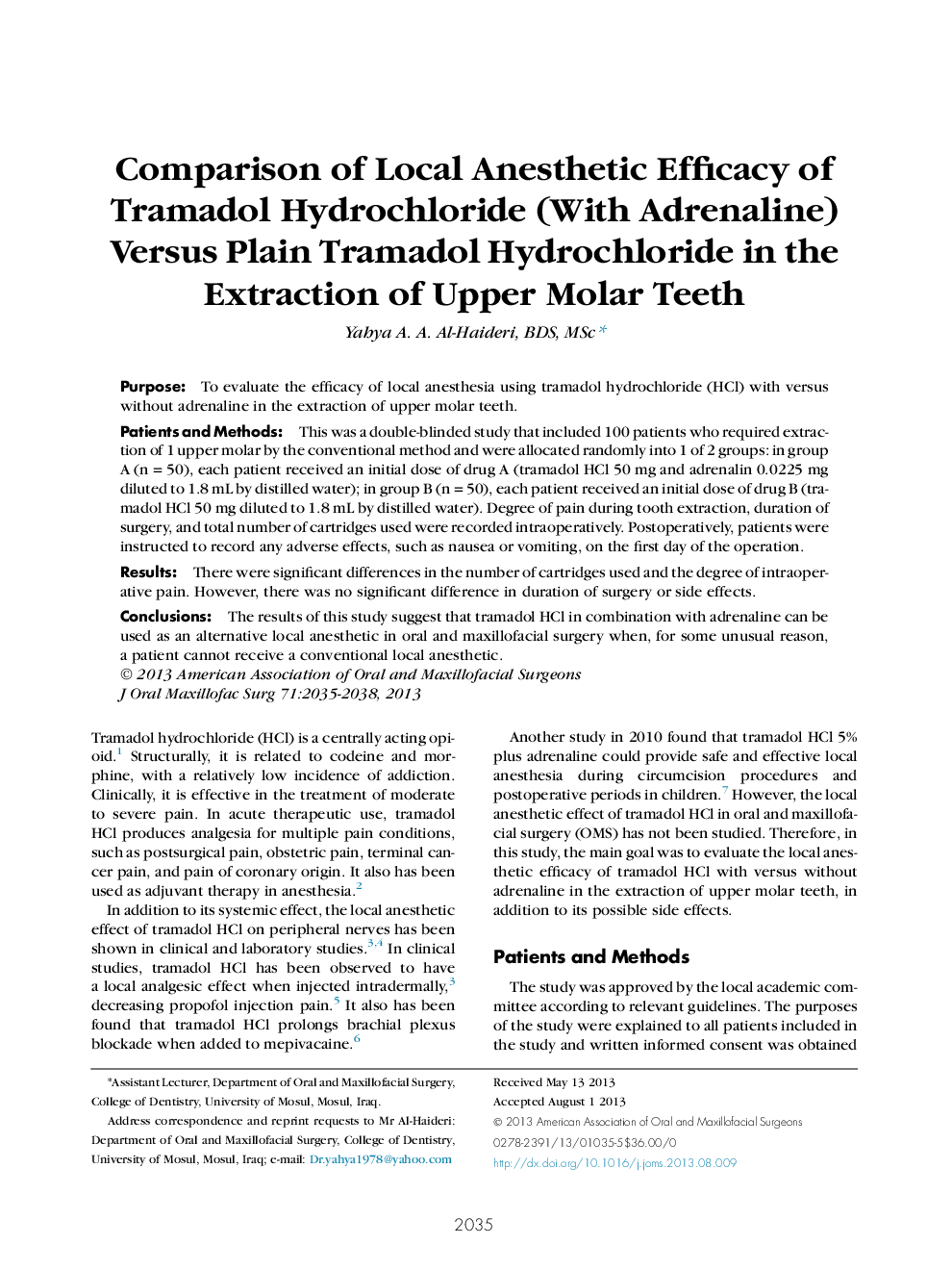| کد مقاله | کد نشریه | سال انتشار | مقاله انگلیسی | نسخه تمام متن |
|---|---|---|---|---|
| 3152544 | 1198010 | 2013 | 4 صفحه PDF | دانلود رایگان |

PurposeTo evaluate the efficacy of local anesthesia using tramadol hydrochloride (HCl) with versus without adrenaline in the extraction of upper molar teeth.Patients and MethodsThis was a double-blinded study that included 100 patients who required extraction of 1 upper molar by the conventional method and were allocated randomly into 1 of 2 groups: in group A (n = 50), each patient received an initial dose of drug A (tramadol HCl 50 mg and adrenalin 0.0225 mg diluted to 1.8 mL by distilled water); in group B (n = 50), each patient received an initial dose of drug B (tramadol HCl 50 mg diluted to 1.8 mL by distilled water). Degree of pain during tooth extraction, duration of surgery, and total number of cartridges used were recorded intraoperatively. Postoperatively, patients were instructed to record any adverse effects, such as nausea or vomiting, on the first day of the operation.ResultsThere were significant differences in the number of cartridges used and the degree of intraoperative pain. However, there was no significant difference in duration of surgery or side effects.ConclusionsThe results of this study suggest that tramadol HCl in combination with adrenaline can be used as an alternative local anesthetic in oral and maxillofacial surgery when, for some unusual reason, a patient cannot receive a conventional local anesthetic.
Journal: Journal of Oral and Maxillofacial Surgery - Volume 71, Issue 12, December 2013, Pages 2035–2038